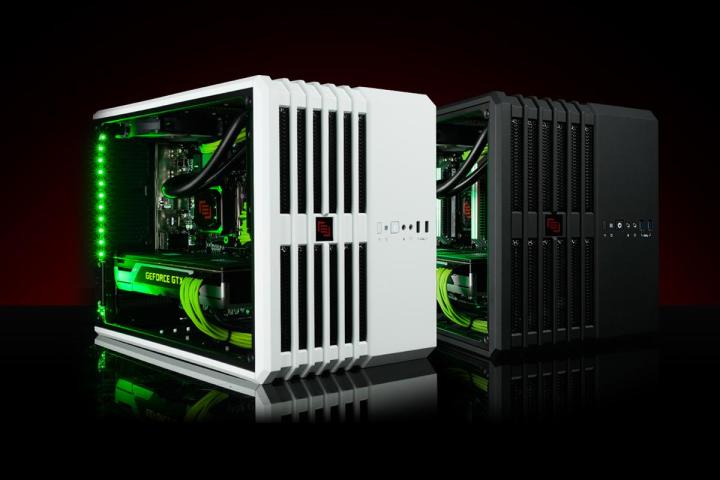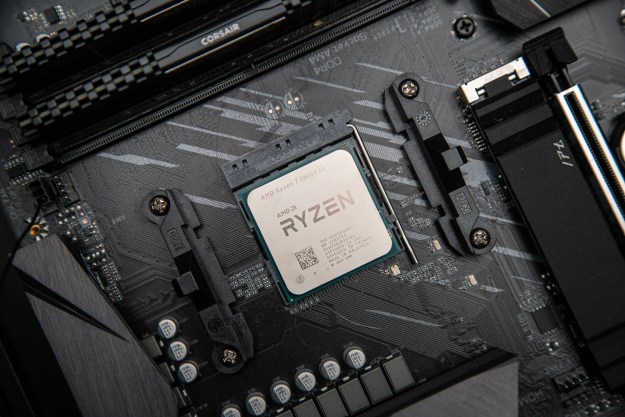
Measuring 12.5 x 10 x 15.5-inches, the upgraded line of desktop PCs packs an incredible punch for its Lilliputian size. The X-Cubes aren’t fitted with Intel’s newest, slim Core M Broadwell processors, but that’s due to reasons which are rooted in power.
They do support Haswell chips up to the 3GHz Intel Core i7-5960x, ensuring that gamers will have all the processing horsepower that they could need. As if that weren’t enough to prove the X-Cube means business, the graphics card options should do the job.
You can opt for a dual graphics card system touting either Nvidia’s top-shelf GeForce GTX 980, or AMD’s mouth-watering Radeon R9 290x. If you can afford it, there’s also support for up to 64GB of Corsair Dominator memory, and three hard drives.
It goes without saying the refreshed X-Cubes runs Windows 8.1 out the box. However, for an extra $55, you can opt for Windows 7 instead.
Despite its cramped size, the system holds a pair of USB 3.0 ports and audio jacks on the front for easy access. Plus, you’ll find an additional four USB 3.0 connectors, and six USB 2.0 ports on the rear. Now that’s a lot of connectivity.
802.11ac Wi-Fi, Bluetooth 4.0, and Gigabit Ethernet are also offered standard. On the subject of cooling, Maingear promises the moon, but we’ll need to take an X-Cube for a quick spin to see exactly how hot it gets.
We all know that cooling is often a problem with workhorses of this nature. But the optional Epic 120 or Epic 240 CPU cooler should quietly and elegantly take care of business. Designed to save space while turning a few heads, the upgraded X-Cube lights up like Christmas trees on command.
They can be moved around pretty effortlessly as well, tipping the scales at just 20 pounds. That’s nothing compared to the 61-pound Alienware Area 51.
The X-Cube isn’t even particularly pricey, starting at $799. Granted, for $800, you won’t get a very high end configuration. That will cost you at least twice as much.
It’s worth noting that, while Maingear informed us the X-Cube measures 12.5 x 10 x 15.5-inches, the rig’s official page indicates that it instead measures 16.3 x 13.1 x 18-inches. We will reach out to Maingear about this discrepancy, and we will update this story accordingly if we obtain more information.
Editors' Recommendations
- The simple reasons your PC games don’t play as well as they should
- Don’t believe the hype — the era of native resolution gaming isn’t over
- Nvidia finally made a tiny RTX 4000 graphics card (but you probably don’t want it)
- What is DirectX, and why is it important for PC games?
- Cooler Master’s Orb X gaming pod is futuristic and utterly absurd


